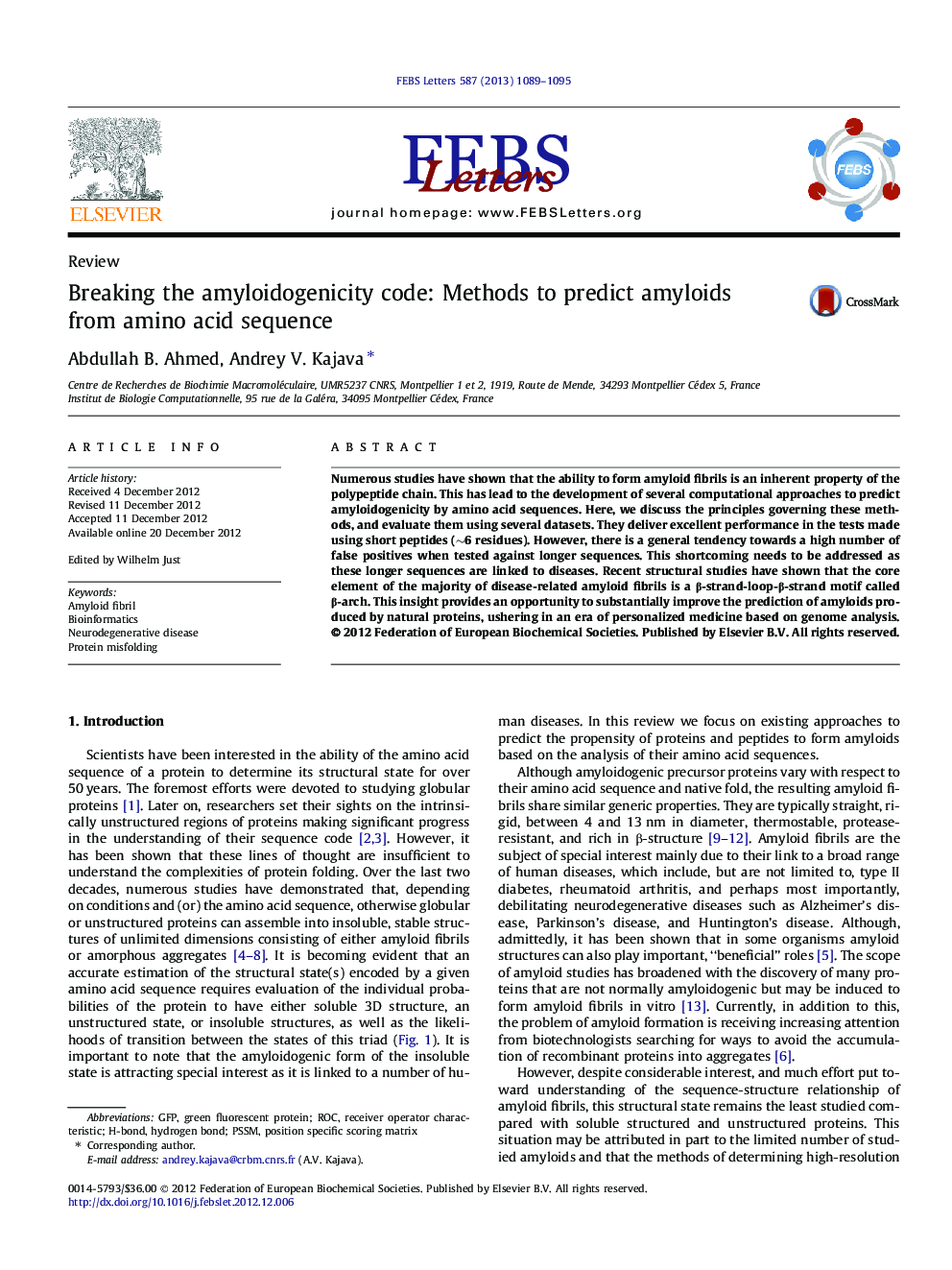| Article ID | Journal | Published Year | Pages | File Type |
|---|---|---|---|---|
| 10871033 | FEBS Letters | 2013 | 7 Pages |
Abstract
Numerous studies have shown that the ability to form amyloid fibrils is an inherent property of the polypeptide chain. This has lead to the development of several computational approaches to predict amyloidogenicity by amino acid sequences. Here, we discuss the principles governing these methods, and evaluate them using several datasets. They deliver excellent performance in the tests made using short peptides (â¼6 residues). However, there is a general tendency towards a high number of false positives when tested against longer sequences. This shortcoming needs to be addressed as these longer sequences are linked to diseases. Recent structural studies have shown that the core element of the majority of disease-related amyloid fibrils is a β-strand-loop-β-strand motif called β-arch. This insight provides an opportunity to substantially improve the prediction of amyloids produced by natural proteins, ushering in an era of personalized medicine based on genome analysis.
Keywords
Related Topics
Life Sciences
Agricultural and Biological Sciences
Plant Science
Authors
Abdullah B. Ahmed, Andrey V. Kajava,
